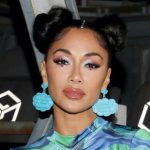

“Hearst Magazines and Yahoo may earn commissions or income from certain items through the links below.”
If you’ve noticed hair thinning or falling out recently, you’re not alone. More than 50% of women have experienced hair loss at some point in their lives, and 22% reported having hair loss problems after contracting COVID-19. So it’s safe to say: everyone wants healthier, thicker, stronger hair.
How to grow hair is arguably the question most beauty professionals tire of — because there is no one right answer. From every face mask Sephora has ever known to pop-up supplements, most of us are willing to do (or buy!) anything that helps us get thicker hair. But don’t waste time on pills or products that don’t work for you. The biggest pro tip is to keep it simple. “Less is more when it comes to promoting hair growth, but compliance is key,” said Debbie Velozzi, head of product development at Virtue Labs. “Growth products are meant to be used every day, and while they take time, they do work.”
Here, we talk to celebrity hairstylists and trichologists to break down everything you need to know about how to grow thicker and longer hair the right way.
eat smarter
We have great news for avocado fanatics. According to Michelle Blaisure, certified trichologist and expert in Bosley Professional Strength products and techniques, a diet rich in healthy fats is essential for thick, healthy hair. “While genetics determines hair texture and frizz, our diet plays an important role in how our genes are expressed,” says Blaisure. “Be sure to get plenty of high-quality protein and high-quality fats like olive oil and omega-3 fatty acids.” She recommends salmon, avocado, nuts, vegetables and fruits for all the key nutrients needed for stronger hair.
Use the right shampoo and conditioner
This is obvious, but needs to be repeated: different hair types require specific products to meet their exact needs. Those with fine hair should look for volumizing shampoos and conditioners, like Redken High Rise Volume, to add volume and shine, says Jenny Balding, senior stylist at Cutler Salon. For those with coarse hair, Balding recommends products that smoothen frizz and moisturize, like Living Proof’s Perfect Hair Day Conditioner. A good rule of thumb is to choose a shampoo that gently cleanses the scalp and a conditioner that boosts hydration (for mid-lengths to ends), says Lars Skjoth, CEO and founder of Harklinikken.
do not wash
Too much good stuff can damage your hair. According to Lucy Flora, a stylist at Frédéric Fekkai in New York City’s SoHo district, the number one mistake she sees clients make is over-washing.
“Nothing shines like your hair’s natural oils,” says Flora. You can help distribute natural oils by lightly brushing your hair regularly (more on that below). Do not use more than a few days before washing your hair; you still need to rinse off product buildup to keep your scalp healthy. Speaking of scalp…
Start with the scalp
When it comes to hair growth, don’t sleep on your scalp. (Well, you know what we mean.) Blaisure explains that the scalp is rich in the bacterial and fungal microbiome necessary to keep the skin and its growing hair healthy. When we don’t have enough shampoo or use harsh cleansers, it can cause skin problems that can negatively affect hair growth. “The skin is immune and our first line of defense against toxins and environmental aggressors. When the scalp is damaged, the scalp cannot protect itself,” she says. “Maintaining a healthy balance of moisture and natural oils is just as important for the scalp as it is for the face.”
She blames overuse of hairdressers and harsh cleansers (i.e. sulfates) for causing hair loss and disrupting the pH balance of the scalp. She recommends limiting thickening products that leave a lot of residue and make hair look dull, as well as any products with a high pH.
Linda de Zeeuw, head stylist at Rob Peetoom in Brooklyn, recommends massaging the scalp to activate blood flow and avoiding shampooing more than 3 times a week. De Zeeuw also warns against overusing dry shampoo — which we know is heartbreaking — because it can create a layer of residue on the scalp and clog hair follicles, preventing new healthy hair from growing.
get blood flowing
Before you stock up on promising products, try giving yourself a scalp massage, which boosts blood flow and helps break down scar tissue in the follicles to increase thickness. Use your fingertips in small circular motions with medium pressure. Despite the growing popularity of scalp massage tools, Skjoth warns that sharp rubber or metal massage devices can damage hair follicles and prevent hair growth. “When done the right way, regular scalp massage can do wonders for the microcirculation of the hair follicle, especially when combined with a serum like a custom Harklinikken extract,” he adds.
Read the ingredient list
Skjoth recommends avoiding products that contain silicones, artificial colors or – if you’re sensitive – fragrances. “These ingredients can cause scalp problems and sometimes dermatitis, folliculitis (infection of hair follicles), and if left untreated, can lead to permanent hair loss in damaged follicles.”
Instead, look for ingredients with anti-inflammatory properties to stabilize the scalp microbiome and balance the excess sebum that often contributes to thinning hair. Harklinikken Stabilizing Shampoo ($54) uses burdock root extract to soothe and reduce inflammation.
Try hair growth supplements
According to Balding, taking a multivitamin along with a hair supplement can make a big difference. Blaisure agrees, adding that certain vitamins, minerals and fatty acids are necessary for healthy hair follicle function and growth. “For many people, these need to be combined with a healthy diet,” she said.
Choose from Bosley Professional Strength Healthy Hair Vitality Supplement (rich with anti-inflammatory omega-3 fatty acids, horsetail and pumpkin seed extracts) or Viviscal (with a proprietary collagen complex to support healthy hair growth). We also love Nutrafol, which won a BAZAAR Hair Award in 2021. Nearly every dermatologist we interviewed agreed: In a sea of powders, gummies, pills, and injections that promise thicker, fuller hair, Nutrafol is the product that delivers professional results. Be patient: Pill effects are possible It takes three to six months – you need to take them constantly to keep your new hair growing.
Ditch the hot tools
We know it’s hard to separate with a hair dryer or flat iron. But if you really want healthier hair, start writing breakup texts. “Keeping the use of hot tools to a minimum will reduce hair damage,” says Balding. “It’s going to make a huge difference.” She emphasizes that if you can’t stay away from your favorite hot tools (guilty), it’s crucial to use a heat protection spray like the Cutler Protectant Treatment Spray and hot tools that evenly regulate heat and temperature Brand iron such as T3 SinglePass Flat. We also love the Dyson Airwrap, which is a styling tool and blow dryer hybrid that uses air and minimal heat to dry and curl your hair.
on purpose
Brushing Your Hair When was the last time you really thought about brushing your hair? Regular and intentional brushing can affect hair thickness because it helps distribute natural oils that help protect hair from damage and add shine, says Blaisure. Regardless of your hair texture, daily brushing will also help exfoliate your scalp and remove dead hair.
But this only works if you use the right brush. Flora likes to use a round ceramic brush like the Ibiza Hair Cork Collection to help create shine when blow-drying. Zeeuw recommends using a boar bristle brush, such as the popular Mason Pearson. “It polishes the hair and adds natural shine because you’re dispersing the natural oils from the scalp into the hair,” she says. As for the biggest brushing faux pas? “Don’t use a plastic brush,” she says. “This can damage your hair and make it static.”







